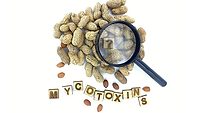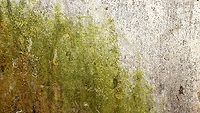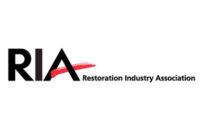The Sandy Solution




The Problem: On October 29, Hurricane Sandy made landfall along the mid-Atlantic Eastern seaboard. Although wind damage was extensive, storm surge and associated flooding created hundreds of thousands of water-damaged structures from Delaware to Connecticut, with severe impact in New York and New Jersey. While many commercial structures and residences have insurance proceeds and other financial resources from which they can draw to repair and rebuild, many homeowners do not have access to such funds.
Some of the risks facing individuals dealing with homes flooded during the hurricane change over time. Contractors and volunteers dealing with the initial response are exposed to safety hazards, such as sharp objects, slips and trips from wet and cluttered conditions, and back injuries from improper lifting. Health concerns stem from exposure to bacteria carried in by floodwater, asbestos in building products, lead in paint, oils, PCBs, pesticides and heavy metals that were churned up during the storm from river and ocean sediments. As the time period from the flooding to the repairs lengthens, mold growth becomes more acute, posing a hazard to the health of occupants and workers.
The containment problem is exacerbated by some private companies and public service providers indicating that they may not authorize restoration or repair of essential mechanical services until mold-contaminated structures have been “treated.”
Even though many of the hazards noted above have been identified by government officials and industry experts, few concrete proposals have been put forward for addressing the hazards in a cost-effective and efficient manner.
The All Hands Volunteers Response (aka The Sandy Solution)
Because of the multi-dimensional nature of the problems facing the homeowners with limited economic resources, a comprehensive approach to the situation must be provided. But gathering input from numerous industry experts, All Hands Volunteers has developed an approach to dealing with homes flooded during Hurricane Sandy. This process can have a variety of starting and stopping points, depending on the specific building conditions and needs of the homeowner, but in its most comprehensive version, the Sandy Solution includes:
- Evaluation of the structure to determine conditions, applicability of services and recommendations to homeowner.
- Final agreement on level of service.
- Isolation of non-impacted upper levels from lower level (if applicable).
- Removal of wet porous materials using proper personal protective equipment (PPE) for construction and contaminant hazards.
- Gutting of damaged finish material, including plaster, wallboard and sub-floors, as appropriate.
- Renovation of electrical power panel to accommodate power distribution box for cleaning and drying.
- Documentation of the initial level of communication through moisture measurements and biological field test measurements.
- Cleaning and mold treatment using a foam cleaning process.
- Drying of structural materials by reestablishing home heating and/or through supplement drying.
- Air washing of isolated upstairs areas for spore.
- Documentation of final conditions in the structure through moisture measurements and biological field test measurements.
- Coordination of rebuilding.
Although this approach involves specialized equipment, it is a combination of proven restoration techniques. While science-driven, each step of the process is intuitive and, therefore, easily adaptable to a volunteer approach where workers bring varied skill sets to the project. The science component allows for pre- and post-measurements at critical phases of the Sandy Solution to ensure that work is accomplished effectively, as well as efficiently.
Since the safety and health of the workers and the occupants are of paramount concern, the Sandy Solution emphasizes proper work practices and the utilization of PPE for each specific task.
Details of the Foam Cleaning and Drying Aspects of the Sandy Solution
Traditional mold remediation involves the removal of water-damaged/mold-contaminated porous materials. This is matched with detailed cleaning of semi-porous and non-porous items through a labor intensive process known in the industry as the “HEPA sandwich.” This traditional cleaning method includes an initial thorough cleaning with a high-efficiency particulate air (HEPA) vacuum, damp wiping or wet cleaning and a second round of HEPA vacuuming.
Although this traditional approach to mold remediation has been shown to be very effective, there is strong evidence that a revised cleaning process is necessary to address the potential contaminant hazards beyond mold and bacteria. Flood waters that carry chemicals, heavy metals and other dangerous materials into buildings can drive those contaminants into porous and semi-porous building components through capillary action. Surface treatments like vacuuming and damp wiping, which do not reverse this capillary action, leave a significant amount of flood residue in the structure. A foam cleaning system addresses many of these concerns because the lather consistency of the cleaning product not only increases dwell time for the anti-microbial agents, it also works to extract the contaminants from the surface of the semi-porous structural members.
The foam cleaning process has a number of explicit steps:
- Testing of representative surfaces for moisture content using a moisture meter and biological contamination levels using a Bio-Reveal ATP tester.
- Preparation of the structure for foam cleaning by removal of rubble left from gutting, including wall cavity insulation, nails/screws and small debris.
- If there is a crawlspace, it is recommended that the sub-floor be removed so that the crawlspace can also be properly prepared by removal of rubble.
- Worker preparation through the donning of splash resistant suits, respiratory protection, face shields and rubber gloves.
- Preparation of the cleaning equipment by properly mixing concentrates and adjusting settings on the foamer and power wash equipment.
- Application of cleaning foam to all exposed surfaces with appropriate dwell time (3-5 minutes).
- Agitation of the foamed surfaces with scrub brushes for semi-porous structural materials and members, and soft brushes or wiping for finished surfaces.
- Removal of cleaning chemicals and debris using a power washer with a low volume setting for structural members and squeegee/wiping for finish materials.
- Removal of excess water using a wet/dry HEPA vacuum.
- Installation of plastic barrier on the soil of the crawlspace, if applicable.
- Drying of the structure to FEMA recommended levels (15% moisture measured in wooden studs) utilizing a combination of home heating system, natural ventilation, floor fans and commercial type dehumidifiers.
- Post-cleaning testing of surfaces for biological contaminants and moisture levels.
- Air washing of surfaces and contents in the isolated areas of the home using window fans and low pressure compressed air. (Identification of any visible fungal growth during air washing triggers secondary remediation.)
- Surface test of contents with Bio-Tape samplers in a representative number of structures where air washing was completed.
As shown by the above description, while the foam cleaning and drying process does involve a number of detailed steps, each step can be broken down into simple instructions for volunteers and easily managed by a project coordinator/team leader so that the individual activities combine into a useful cleaning regimen.
Application of the Sandy Solution
This approach to dealing with hurricane-damaged houses on the East Coast has been developed and pilot-tested by All Hands Volunteers, working in collaboration with Wonder Makers Environmental, specialists in the training and certification for environmental issues. Funding has been secured for second stage implementation, which involves development of formalized training procedures for volunteers and acquisition of equipment to scale the process such that 100 houses can be cleaned – including a mold treatment – in seven to 10 days with the proper number of volunteers and project coordinators.
Looking for a reprint of this article?
From high-res PDFs to custom plaques, order your copy today!








